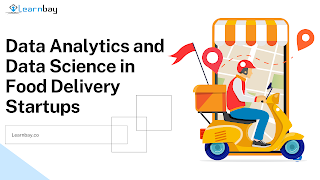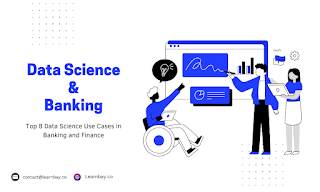Data Optimization Techniques that Data Scientist should know
Are you a data scientist seeking optimization techniques? If so, you should read this article. Making wiser judgments took up a lot of our time as data scientists. We are always trying to create new prediction models to offer deeper insights. In this essay, you won't learn how to make better forecasts; instead, you'll learn how to make the optimal choice.
Here, you'll learn about a few special techniques for optimizing your Python code.
Purpose of Data Optimization Techniques
In large part, problems related to logical programming have also been solved using data science and AI-based streamlining. Being able to write complex Python code is crucial for data scientists. Writing a disorganized or wasteful scratch pad will take a lot of time and money out of your venture.
This is not permitted when we are dealing with a customer, as knowledgeable information researchers and specialists are aware. The writing on the task in knowledge discovery, parallel/distributed systems, high-performance computing, data analysis, large-scale data mining, text analysis, manufacturing optimization, parallel/distributed search, scheduling, finance, and civil engineering, among others, accounts for various models.
This location offers a diverse array of research lines and applications that must be investigated. We can minimize the number of operations required to complete any activity while still getting the desired outcomes by employing code optimization techniques.
Methods of Optimization in Data Science
Convergent Parallel Algorithms
Structured and unstructured techniques must be ready to break down a massive data problem into smaller, more manageable chunks when dealing with it. The training of Support Vector Machines may become challenging to handle, and there may be problems with time management and memory management when dealing with more enormous datasets.
Most data scientists have developed and effectively used many parallel techniques (optimization algorithms) to overcome these constraints. The convergent parallel algorithms solve by concurrently addressing multiple components scattered across available experts to use the processing power of multi-center processors and effectively address the problem.
Like that, gradient-type algorithms are likewise easily parallelizable but may have practical limitations. A convergent decomposition approach for the parallel optimization of massive data problems (potentially non-convex) was proposed to address the optimization challenge. There are entirely sequential and fully parallel methods included in the flexible framework. The system also aids in solving many big data issues, including logistic regression, SVM training, and LASSO.
Limited Memory Bundle Algorithm
The majority of large data issues include non-smooth functions made up of thousands of variables and various restrictions. This can occasionally result in a lot of problems. Most solution techniques heavily rely on the setback's convexity, and non-smooth optimization is often based on convex analysis. We present a variety of practical adaptive limited memory bundle algorithms for outsized, potentially non-convex, and inequality-constrained optimization.
Methods to Optimize your Python Code
As a data scientist, you may use a few techniques to optimize your Python code for your project. Python code optimization can help you save a lot of computing power in addition to time. We must employ specific practical approaches that have been optimized to provide the most excellent outcomes.
The following are some of the top methods most data scientists use to enhance and optimize their Python code:
Pandas.apply()
Although Pandas is a highly efficient library, most people are unaware of how to utilize it. Think about the certain places where you use it in your data science project.
"Feature Engineering" is one of this library's incredible features. This feature facilitates the use of existing features to create new features. This feature stands out among other new additions to the Pandas library since it helps isolate information according to the circumstances needed.
Then, we can effectively use it for data processing tasks. For technical explanation, refer to the data science course in Bangalore, and understand the concept in-depth.
Pandas.DataFrame.loc
For individuals that handle data processing duties, this way is strongly favored. The values of a particular column or row in a dataset must be updated as part of a project based on certain circumstances.
This technique can assist us in carrying out that procedure more successfully. The best answer for these types of optimization issues is "Pandas.DataFrame.loc."
Multi-data processing in Python
It offers the capability of receiving assistance from many processors simultaneously. By employing this technique, we divide our progression into several jobs that all execute simultaneously. It will aid in accelerating things.
Vectorize your Functions in Python
Slow loops may be eliminated with the use of this technique. Your computation will run at least two iterations faster if you use a vectorizing function in your Python code. The vectorization approach not only accelerates your code but also improves its aesthetics.
Conclusion
It's a complex task to manage the many various sorts of data that are collected. Newcomers to Data Science (DS) and Machine Learning (ML) are frequently urged to learn everything there is to know about linear algebra and statistics. A productive career in DS/ML depends on the value of a strong foundation in these two courses. However, if you want to achieve the finest results, optimization is also crucial. If you’re a beginner in data science, you can upskill yourself with Learnbay’s data science course in Bangalore. This IBM-accredited training program offers over 15 real–time data science projects to stay ahead of the competition.




Comments
Post a Comment